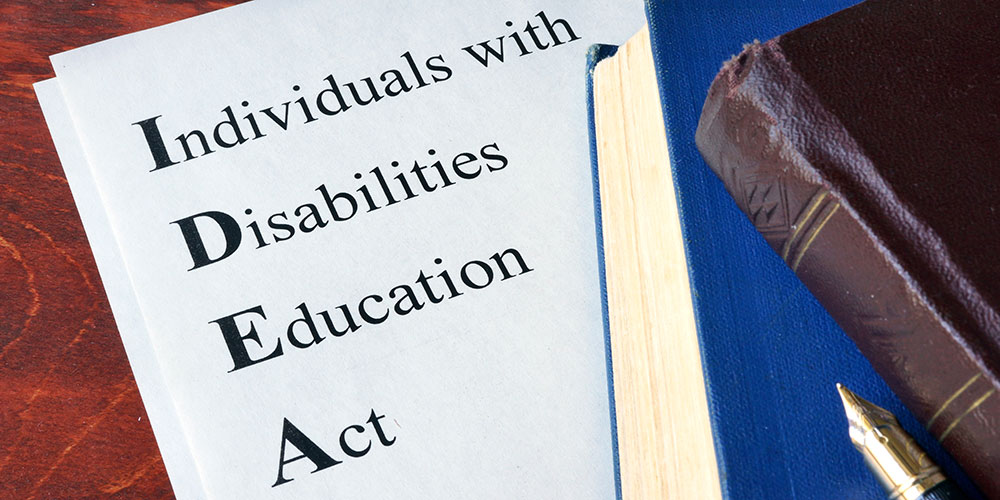The U.S. Department of Education released new guidance Tuesday on discriminatory discipline practices for students with disabilities — the “most comprehensive” guidance the department has released on the issue since the Individuals with Disabilities Education Act (IDEA) was passed in 1975, said U.S. Secretary of Education Miguel Cardona.
The guidance outlines the responsibilities of state education agencies and school districts to follow the federal law, including protecting the rights of students with disabilities to receive a free and appropriate education without discrimination.
“All students deserve to have their rights protected, and schools deserve greater clarity on how they can avoid the discriminatory use of discipline, ” said Cardona. “Too often, students with disabilities face harsh and exclusionary disciplinary action at school. The guidance we’re releasing today will help ensure that students with disabilities are treated fairly and have access to supports and services to meet their needs – including their disability-based behavior. We also expect that districts utilize the federal American Rescue Plan dollars to build capacity, provide professional learning opportunities for educators and school leaders, and hire additional staff. These resources will also help schools live up to their legal obligations, support an equitable recovery for all our students, and make sure that students with disabilities get the behavioral supports and special education services they need to thrive. ”
An estimated eight million children receive special education services under IDEA — approximately 13% of all K-12 students. Roughly 40% of students are identified as having a learning disability, including 16% who have speech or language impairments, 16% who have other health impairments, 11% who have autism, and 11% who have other various types of disabilities, according to U.S. News.
Four new resources for school leaders include:
- Supporting Students with Disabilities and Avoiding the Discriminatory Use of Student Discipline under Section 504 of the Rehabilitation Act of 1973 and an accompanying Fact Sheet
- Questions and Answers Addressing the Needs of Children with Disabilities and the Individuals with Disabilities Education Act’s (IDEA’s) Discipline Provisions
- Positive, Proactive Approaches to Supporting the Needs of Children with Disabilities: A Guide for Stakeholders
- A letter from Cardona to educators, school leaders, parents, and students about the importance of supporting the needs of students with disabilities
In its Section 504 guidance, the department explains schools are required to provide behavioral supports and services to students with disabilities, EdWeek reports. Specifically, it states schools must determine if a student’s behavior is related to their disability before expelling or suspending them.
A main goal of the guidance, department officials said, is to help schools understand how to comply with Section 504 while also keeping school communities safe by ensuring that students with disabilities have the support they need to address disability-related behaviors that could potentially impact school safety.
The new resources were influenced by increasing mental health challenges during the pandemic, including among students with disabilities, and the hiring of new school and central office employees who don’t have a full understanding of what the law requires, education officials said.
“The pandemic did not alter the rights of students with disabilities to receive a free appropriate public education in the least restrictive environment,” Cardona said. “Yet after nearly half a century of the implementation of federal disability laws, we know that the delivery of special education services and aid is still insufficient for too many students.”
While progress has been made since the law was first passed, department officials said implementation issues continue, especially as it relates to disparities in the use of discipline for students of color with disabilities.
According to federal data, during the 2019-20 school year, Black children with disabilities accounted for 17.2% of all students with disabilities but made up 43% of the students with disabilities who were suspended or expelled from school for more than 10 days.
The new guidance also clarifies that seclusion and restraint practices can constitute disability discrimination. Those practices include any time students are placed in a room alone without the ability to leave or placed in a restraint that restricts their movement as a form of discipline.
Data shows restraint and seclusion are disproportionately used on students with disabilities. In the 2017-18 school year, the most recent year of data available, about 102,000 students experienced restraint or seclusion. While only 13% of students enrolled that school year had a disability, 80% of students who experienced physical restraint and 77% who experienced seclusion had a disability.







